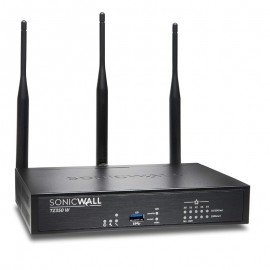NetExtender Overview
- Sonicwall Netextender Windows 7 Download
- Sonicwall Netextender Windows Download
- Dell Netextender Windows 10 Download
- Sonicwall Netextender Windows 7 Demo Download
Uninstall NetExtender, reboot machine, reinstall the latest version NetExtender. Obtain the following information and send them to support: The version of Dell SonicWALL SRA NetExtender Adapter from Device Manager. The log file located at C:Program filesSonicWALLSRANetExtender.dbg. Windows memory dump file located at C:Windows. SonicWall’s SSL VPN NetExtender allows you to provide easy and secure access to Windows and Linux users. This transparent software enables remote users to securely connect and run any application on the company network. Users can upload and download files, mount network drives, and access resources as if they were on the local. The latest SonicWall signed certificate is using SHA256, which isn't supported by default on Windows 7. The Microsoft KB3033929 adds SHA-2 code signing support for Windows 7 and Windows.
For information on using NetExtender, refer to the NetExtender > Status or refer to the DellSonicWALL SRA User’s Guide.
What is NetExtender?


In SRA 5.5 and higher, NetExtender capabilities include the Dell SonicWALL Mobile Connect app for Apple iPhone, iPad, and iPod Touch. Mobile Connect enables secure, mobile connections to private networks protected by Dell SonicWALL security appliances. For information about installing and using Dell SonicWALL Mobile Connect, see the Dell SonicWALL Mobile Connect User’s Guide.
Benefits
The NetExtender Windows client also has a custom-dialer that allows it to be launched from the Windows Network Connections menu. This custom-dialer allows NetExtender to be connected before the Windows domain login. The NetExtender Windows client also supports a single active connection, and displays real-time throughput and data compression ratios in the client.
NetExtender Concepts
Stand-Alone Client
Once the NetExtender stand-alone client has been installed, Windows users can launch NetExtender from their PC’s Start > Programs menu and configure NetExtender to launch when Windows boots.
NetExtender can establish a VPN session before the user logs into the Windows domain. For Windows Vista or later, users can click Switch User on the Windows login screen and click the blue computer icon that appears at the right bottom of the screen to view the dialup connection list, and then can select NetExtender to connect.
IP Address User Segmentation
Administrators can configure separate NetExtender IP address ranges for users and groups. These settings are configured on the Users > Local Users and Users > Local Groups pages, using the NetExtender tab in the Edit User and Edit Group windows.
To reserve a single IP address for an individual user, the administrator can enter the same IP address in both the Client Address RangeBegin and Client Address Range End fields on the NetExtender tab of the Edit Group window.

Client Routes
NetExtender client routes are used to allow and deny access to various network resources. Client routes can also be configured at the user and group level. NetExtender client routes are also configured on the Edit User and Edit Group windows. The segmentation of client routes is fully customizable, allowing the administrator to specify any possible permutation of user, group, and global routes (such as only group routes, only user routes, group and global routes, user, group, and global routes, etc.). This segmentation is controlled by the Add Global NetExtender Client routes and Add Group NetExtender Client routes check boxes.
NetExtender with External Authentication Methods
Networks that use an external authentication server will not configure local usernames on the SRA appliance. In such cases, when a user is successfully authenticated, a local user account is created if the Add Global NetExtender Client routes and Add Group NetExtender Client routes settings are enabled.
Point to Point Server IP Address
Connection Scripts
Sonicwall Netextender Windows 7 Download
Tunnel All Mode
Sonicwall Netextender Windows DownloadDell Netextender Windows 10 Download
Sonicwall Netextender Windows 7 Demo Download
